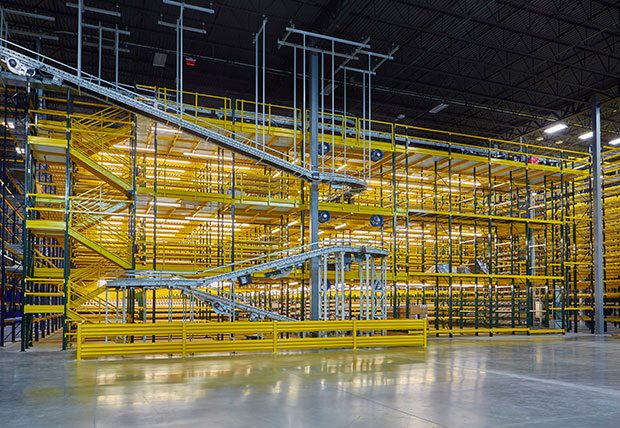With continued e-commerce growth, now more than ever, companies must continually re-evaluate their inventory needs, so they can reliably fulfil orders quickly and efficiently. In this effort, automation is a crucial element in material handling efficiency that is becoming the standard in modern logistics.
 “Today, every company that has warehousing or distribution has either implemented some type of automation or is considering it. The largest companies are incorporating ASRS [automated storage and retrieval systems], autonomous robotic devices, and AGVs. Smaller companies are using a scaled-down approach such as shuttles or conveyors to increase their operational efficiency,” says Bryan Gauger, president of Cisco-Eagle, a full-service, material handling systems integrator that provides warehouse design, equipment, and project management services.
“Today, every company that has warehousing or distribution has either implemented some type of automation or is considering it. The largest companies are incorporating ASRS [automated storage and retrieval systems], autonomous robotic devices, and AGVs. Smaller companies are using a scaled-down approach such as shuttles or conveyors to increase their operational efficiency,” says Bryan Gauger, president of Cisco-Eagle, a full-service, material handling systems integrator that provides warehouse design, equipment, and project management services.
“These automated systems pick products, totes, or pallets from increasingly voluminous, precise storage locations and move them to designated areas for shipping and fulfilment and labour-intensive, manual material handling, automation can significantly improve productivity, accuracy, and consistency while reducing operational costs.
However, it is essential to understand how indispensable a role the racking plays in enabling warehouse automation, says Gauger.
In any automated warehouse system, the rack is foundational. It is the base of the system, where all inventory is stored and retrieved, so it plays an integral role in the automated system’s overall reliability, productivity, and efficiency.”
He adds that the rack structure must provide a controlled environment in which every storage location is uniquely identified, tracked, and integrated with the automated warehouse system.
The trend toward increased warehouse storage density, along with automation, is only intensifying the need for greater precision and tighter tolerances. High-density storage is becoming common with drive-in, pushback, and pallet flow racking, and even floor-to-ceiling rack-supported buildings. Narrow aisles are leaving only inches for autonomous vehicles and robotic devices to pass.
With warehouses storing ever greater volumes and variability of product, the racking must also be rigorously engineered to meet all necessary building and construction codes.
When the warehouse rack systems used with automation are more than 10 metres high, any out-of-tolerance dimensions can quickly cause errors or damage when automated systems attempt to store or retrieve items. According to Gauger, exceptionally tight rack tolerances in the range of only one to two-millimetre variations have become essential today, even though it can be challenging for rack providers.




Comments are closed.